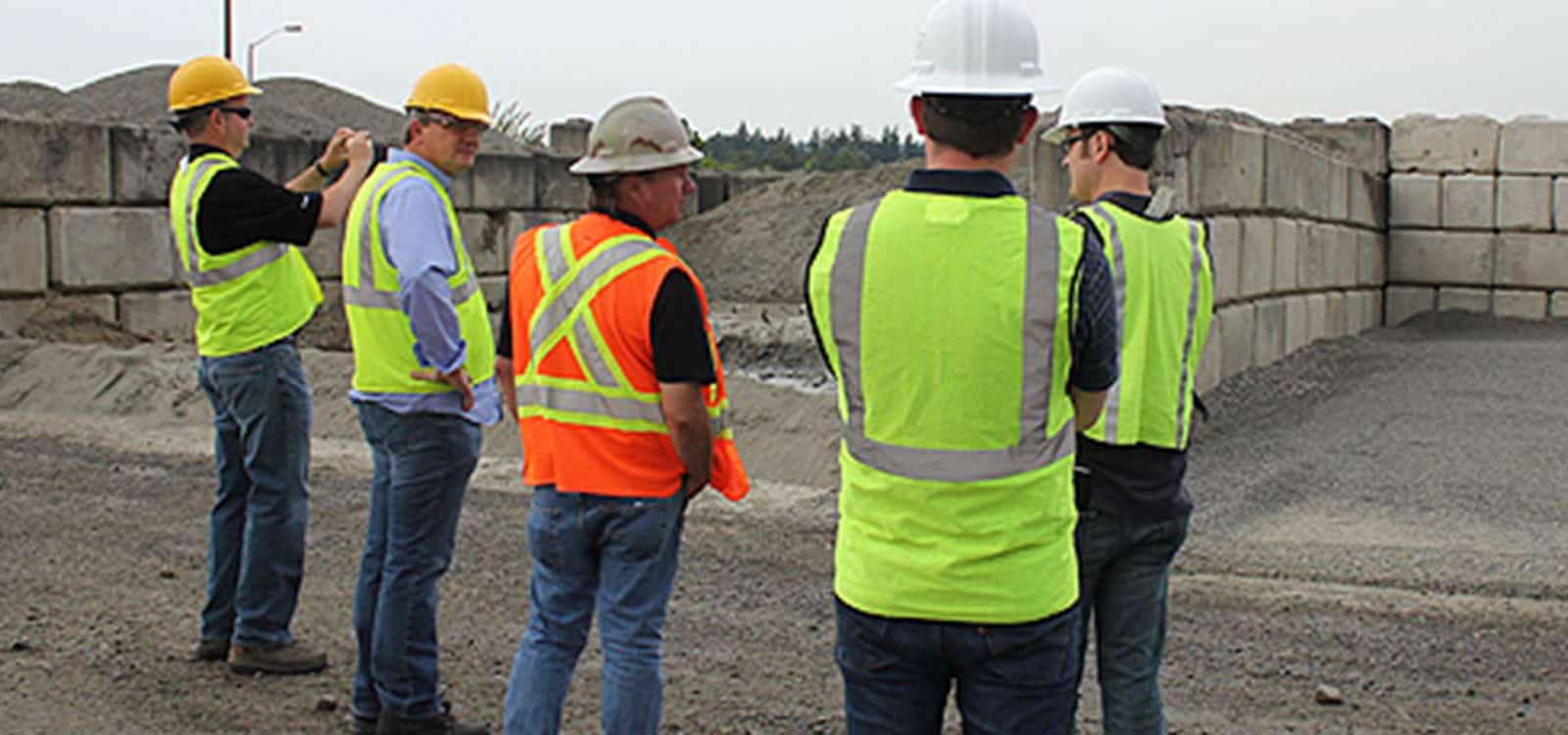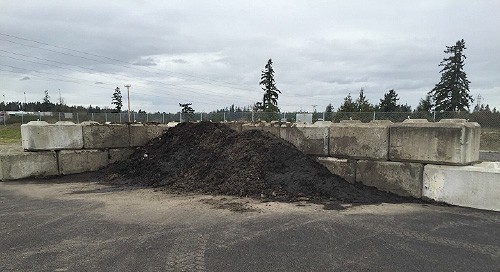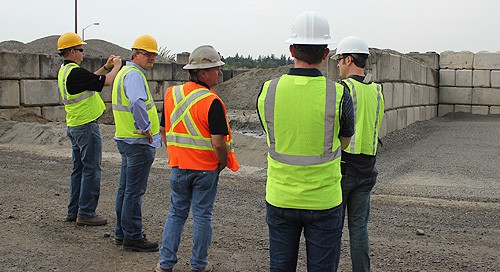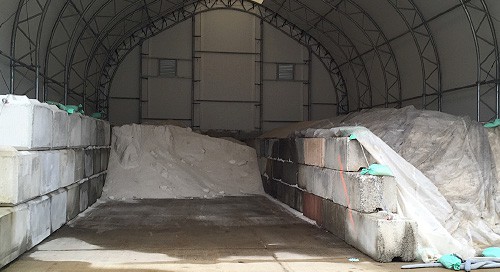September 2, 2015
Difficult Bunker Measurements — Debunked

Customers make the best of the tools they have, to measure their stockpiles.
Many don’t have access to, or regularly use, third-party surveyors. Some customers utilize the walking wheel or make estimations based on truckload or barge sizes. We’ve also heard of the thumb method, and unfortunately the WAG method (‘Wild A** Guess’).
A big source of frustration for customers is trying to figure out how to get the volume of material stored in bunkers.

A typical 2-sided bunker configuration, where the pile is touching both sides of bunker, and does not overflow the containing walls.
Bunkers are constructed out of varying materials: from precast walls, concrete blocks, Jersey Barriers, T or L shaped barrier walls, Ontario tall walls, and Bremer walls, for example.
Bunker shapes and sizes are unique— similar to free-standing stockpiles. Often the bunkers are piled high, bunkers can be very long or wide, some are located inside a structure, and most bunkers have either 1, 2 or 3-sides.
When our customers told us that it is difficult to measure bunkered material, we began to ponder the problem. We put our engineers and team members on-site, examining various bunker configurations.

The engineering team meets with a client to discuss bunker challenges and configurations.
We worked on various ideas, tested, and retested them until the ideas became solutions.
Stockpile Reports is proud to offer bunker measurements in 1, 2 and 3-wall configurations, via our Stockpiles app for the iPhone. Our subscribers now have the ability to quickly measure bunkers without any special equipment, simply by using an iPhone, 2 construction cones and long measuring tape. It isn’t difficult at all, and bunker measurements can be conducted in minutes.
After bunker data is uploaded, the resulting stockpile reports are completed in under 24-hours. Subscribers may then login and access the results. There is no additional fee for the bunker reporting.

A stockpile is contained inside this bunker. The material is well-lit and stacked against the back wall.
Typical Material stored in bunkers include:
- DOT Approved Salt and Sand
- Recycling- utilized in the scrap metal industry
- Aggregates such as gravel
- Landscaping/ Nursery mulches
- Animal Food
- Granular Fertilizer- Urea, Ash, and other commodities
- Livestock Manure Storage
- Scrap Metal storage
- Grain
- Silage
Get the Stockpile Reports service and receive your own customized reports. Simply contact us to get more information.
Stay In the Know
Be the first to know about the latest Stockpile Reports news and features.